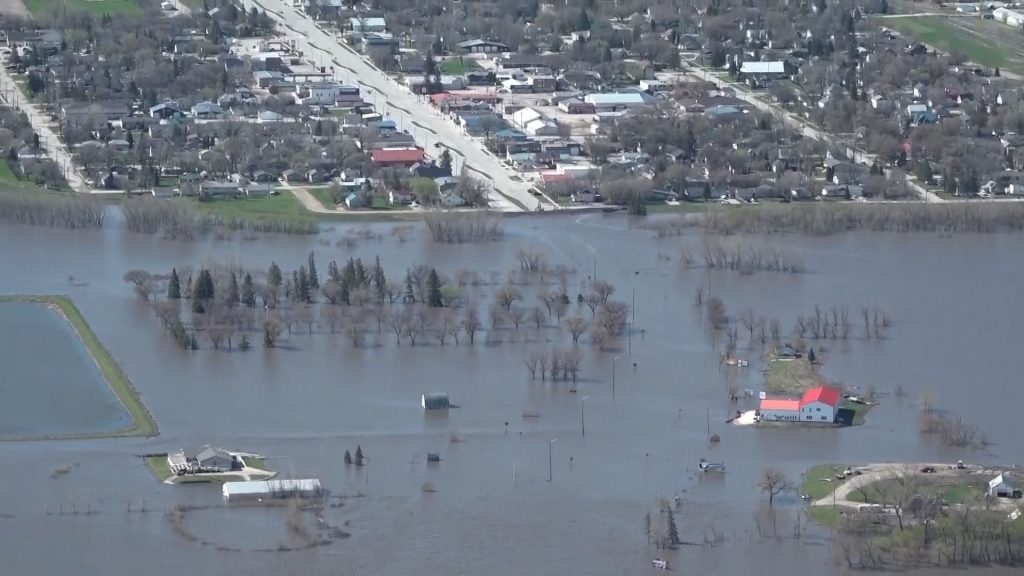Manitoba spring floods rank 3rd on Environment Canada’s top weather stories of year

Posted December 21, 2022 3:34 pm.
Last Updated December 21, 2022 3:44 pm.
Manitoba’s spring floods ranked third in the top weather stories of 2022, according to Environment Canada’s senior climatologist.
Dave Phillips put the Manitoba floods high in the list.
A series of drenching snow and rainstorms dropped more than 330 millimetres of precipitation on Winnipeg – an amount almost four times normal.
It shattered a 125-year-old record.
Flooding was the result. Forty-five municipalities and nine First Nations declared local states of emergency due to washed-out roads, swollen ditches, flooded properties and damage to water treatment infrastructure. Entire towns were surrounded by water.
RELATED:
- Manitoba flood warning increased along Assiniboine River
- Community cut off after flooding washes out roads in western Manitoba
- Manitoba expands evacuation and closures in provincial park due to flooding
- Manitoba plans crackdown after some drivers ignore warnings about flooded roads
At one point, Winnipeg released 60 million litres of untreated sewage into the Red River instead of letting it back up into countless basements.
City flooding is on the increase, Phillips said.
“River flooding was always Canadian,” he said. “But those kinds of urban floods – street floods – this is the new flood.”
Other top 10 weather stories
Hurricane Fiona topped the list for top weather story of 2022.
“Fiona was a large-scale, high-impact storm — likely the most damaging hurricane in Canadian history in terms of insurance costs with initial estimates of $700 million,” Phillips said in his 27th annual rundown.
Winds gusted past 100 km/h across five provinces during the September blast. Fiona — a hybrid of a hurricane and a cyclone — destroyed houses and wharves, knocked out power to more than 600,000 homes and businesses and reshaped coastal geography, including that of Prince Edward Island’s beloved red sand beaches. Three people died.
No. 2 — a group of thunderstorms moving in a line that tore through Ontario and Quebec in May.
“I’ve heard of derechos before, but they were always in the forested areas of Ontario,” Phillips said. “This one went along the 401 (highway).”
At least three tornados, with winds upward of 190 km/h, were recorded near Uxbridge, Ottawa and London. Kitchener-Waterloo set a new windspeed record of 132 km/h. Environment Canada broke into radio broadcasts for the first time to announce a weather warning over a thunderstorm.
At least 11 people were killed, mostly by falling trees. Insurance claims topped a billion dollars.








